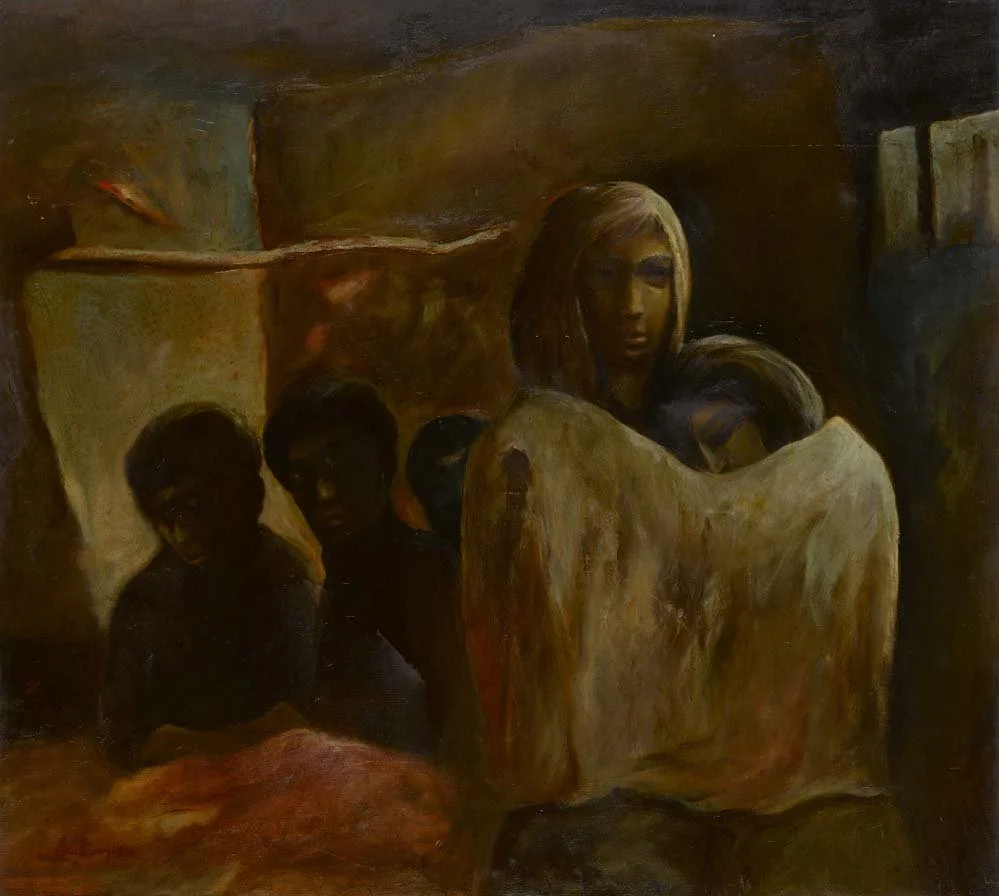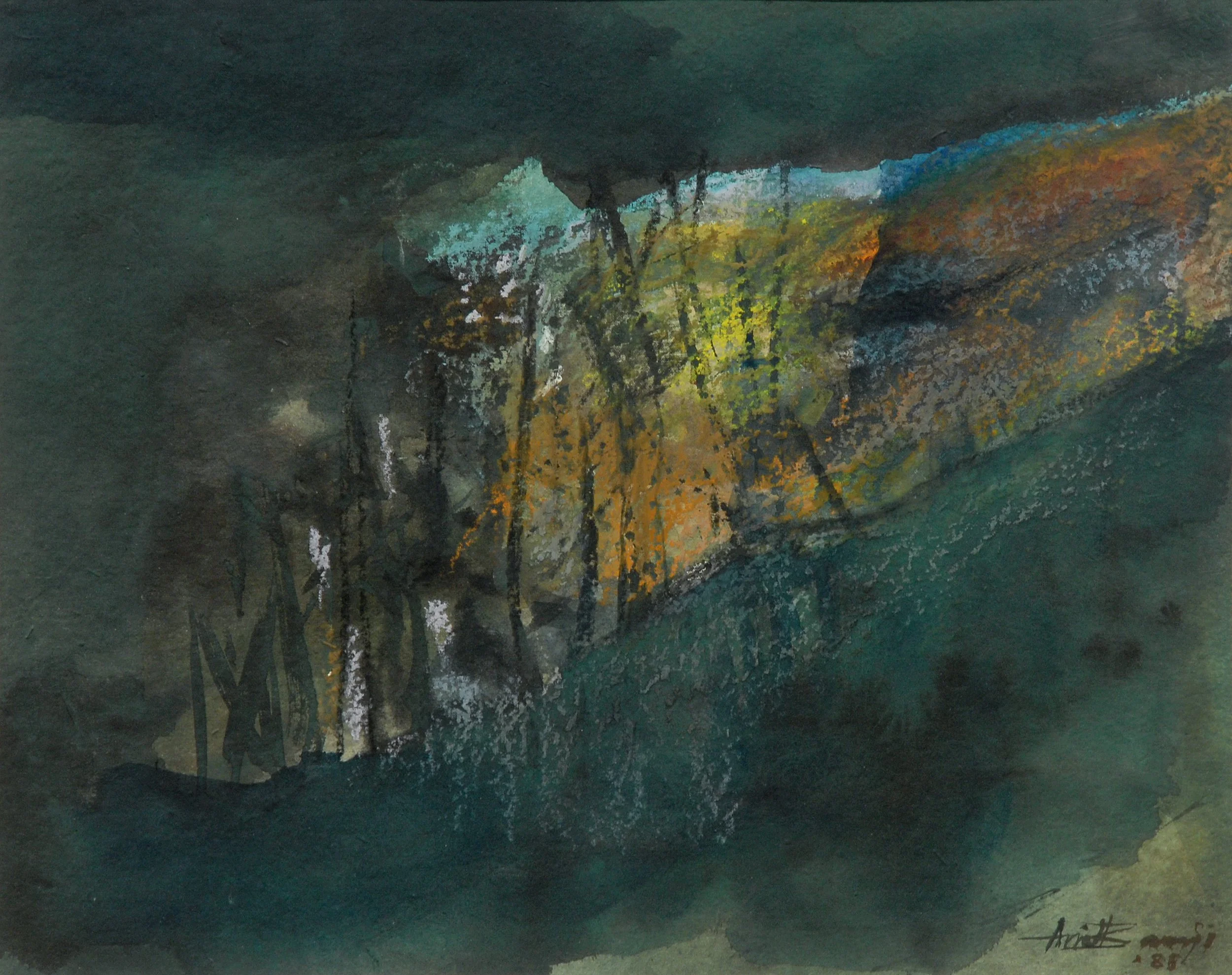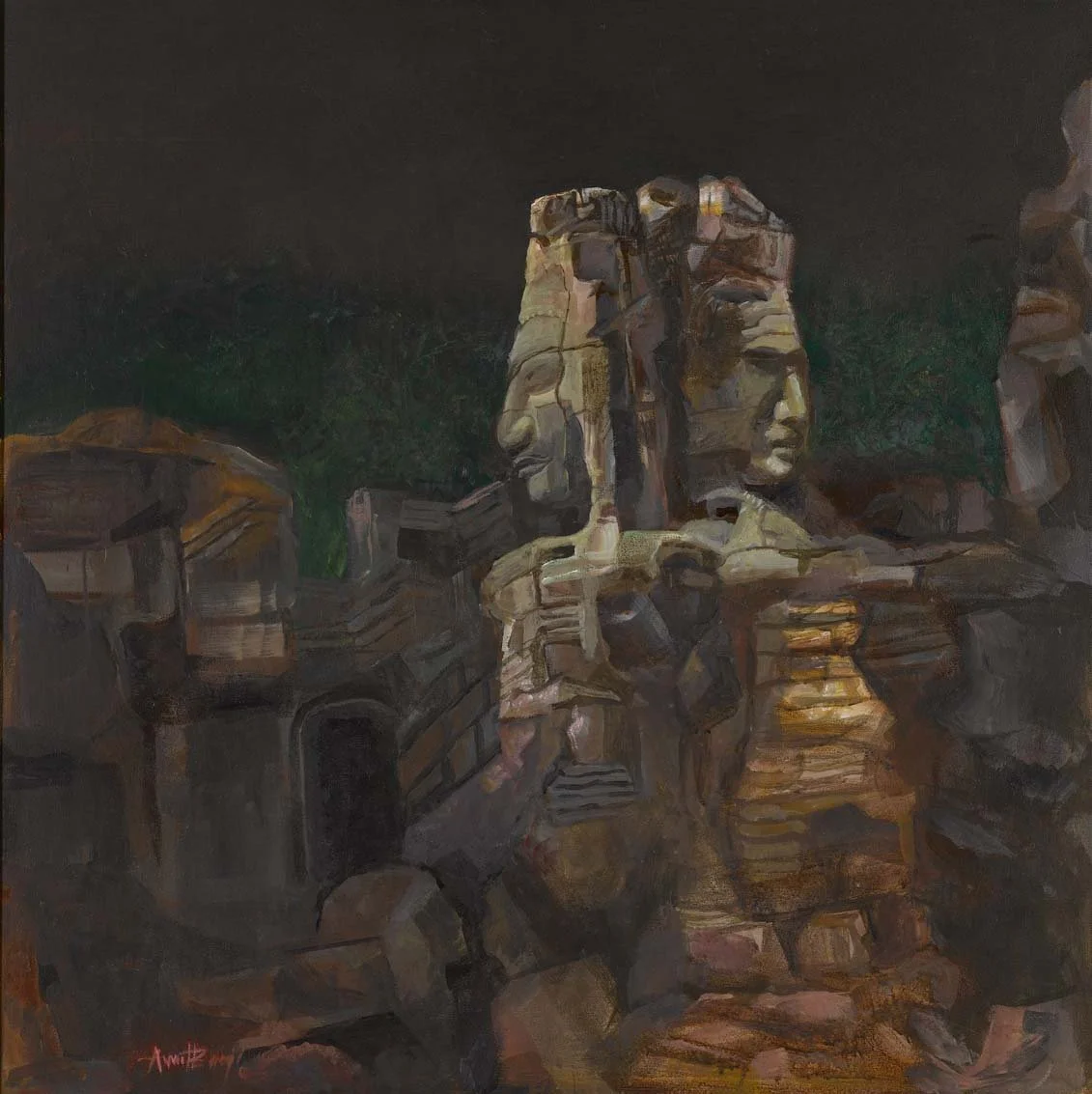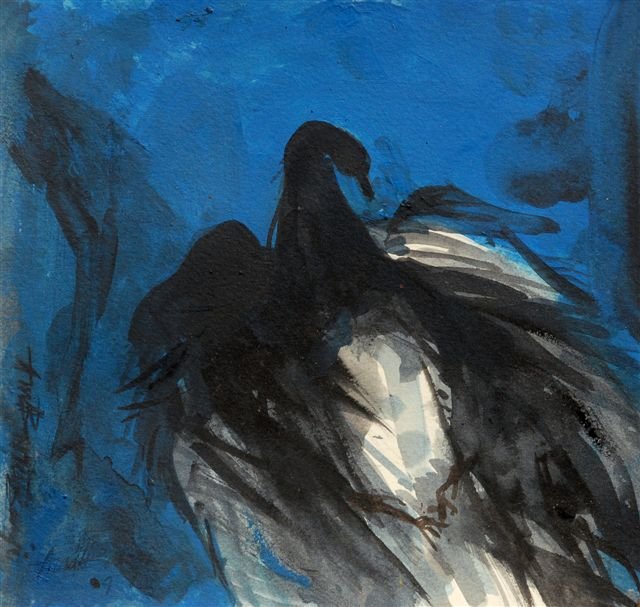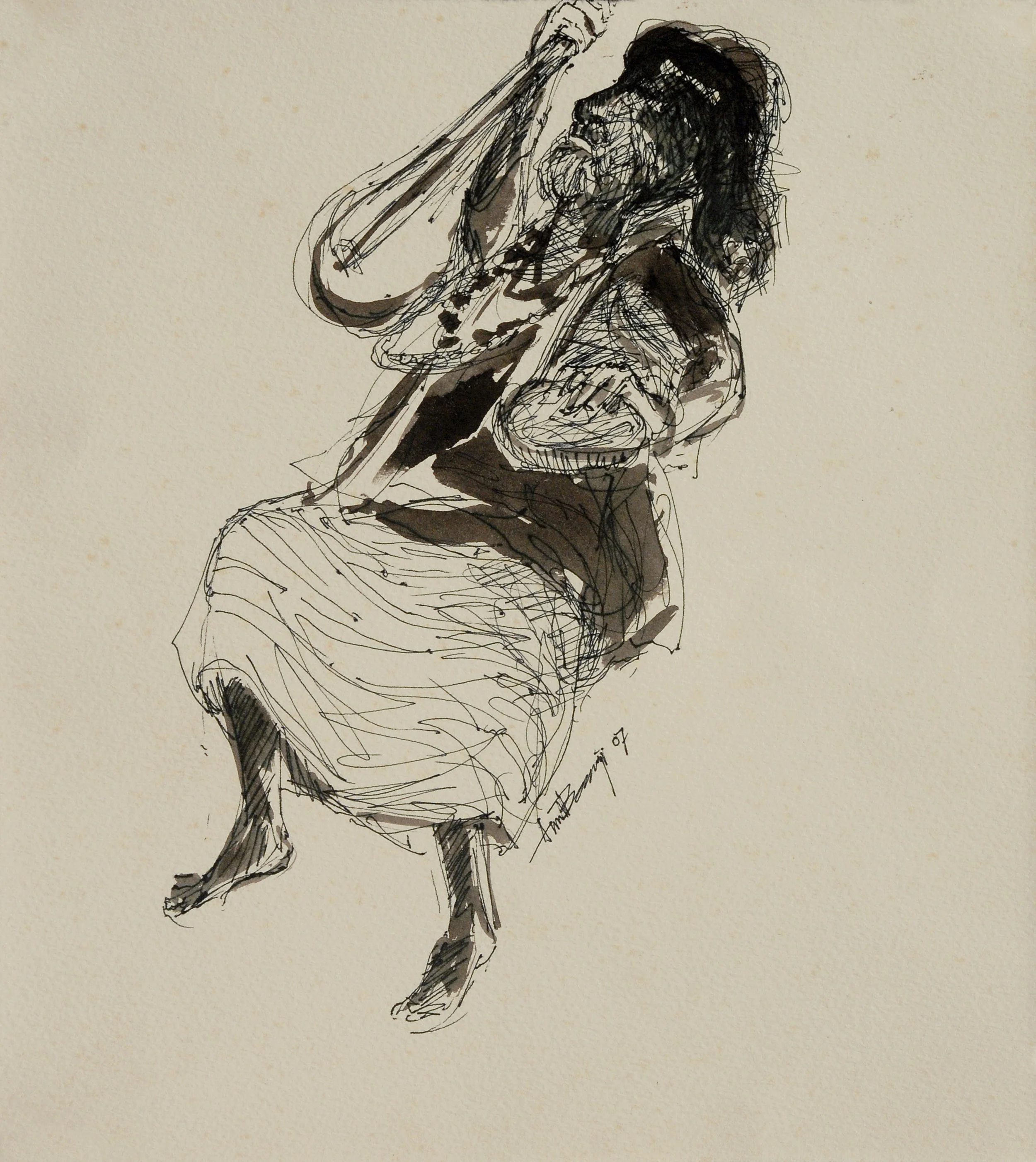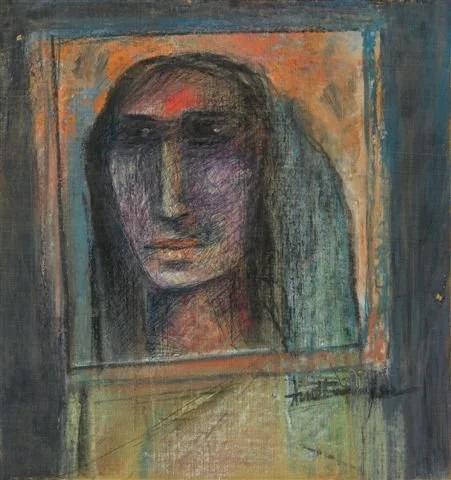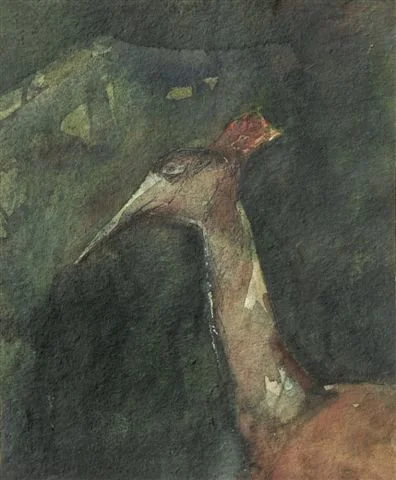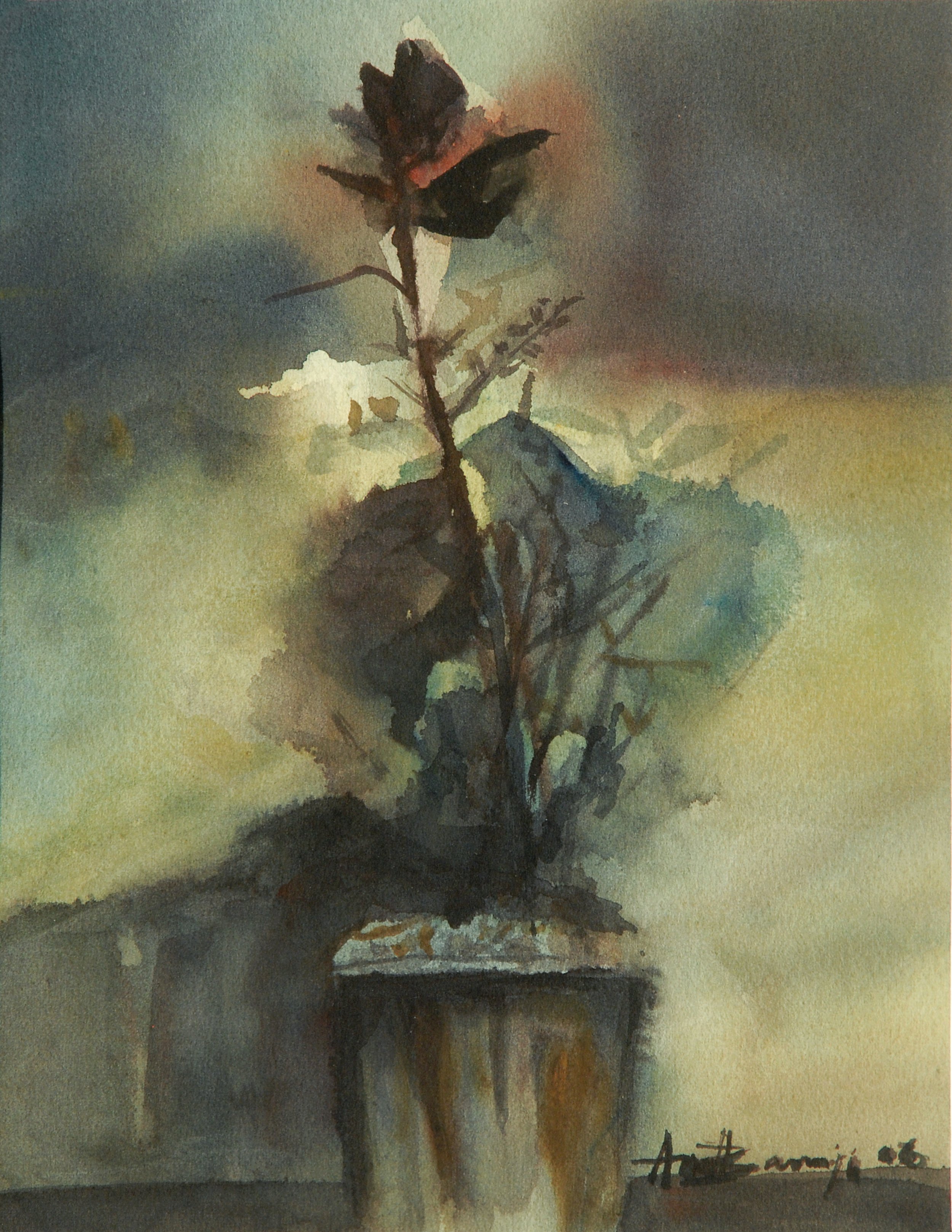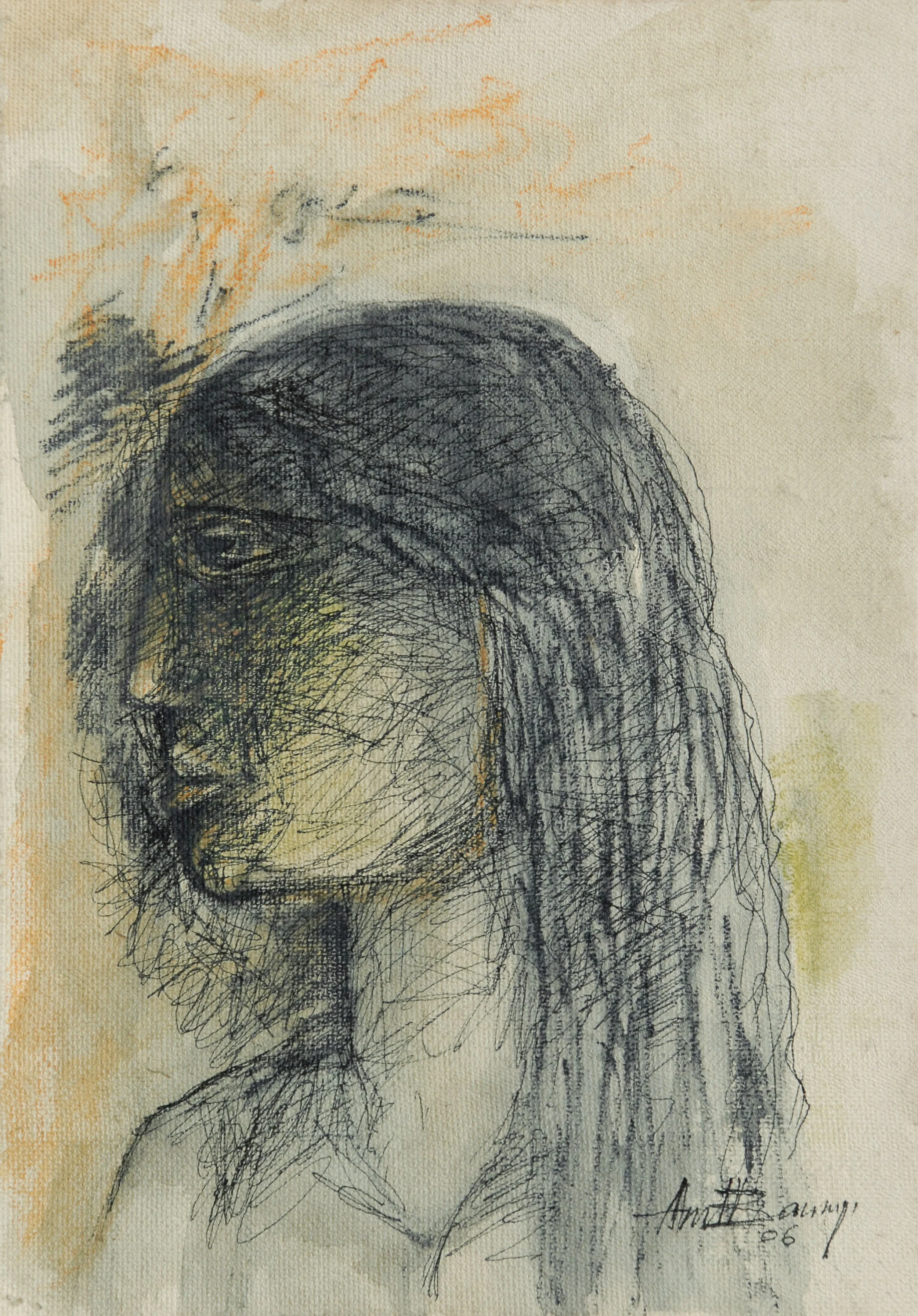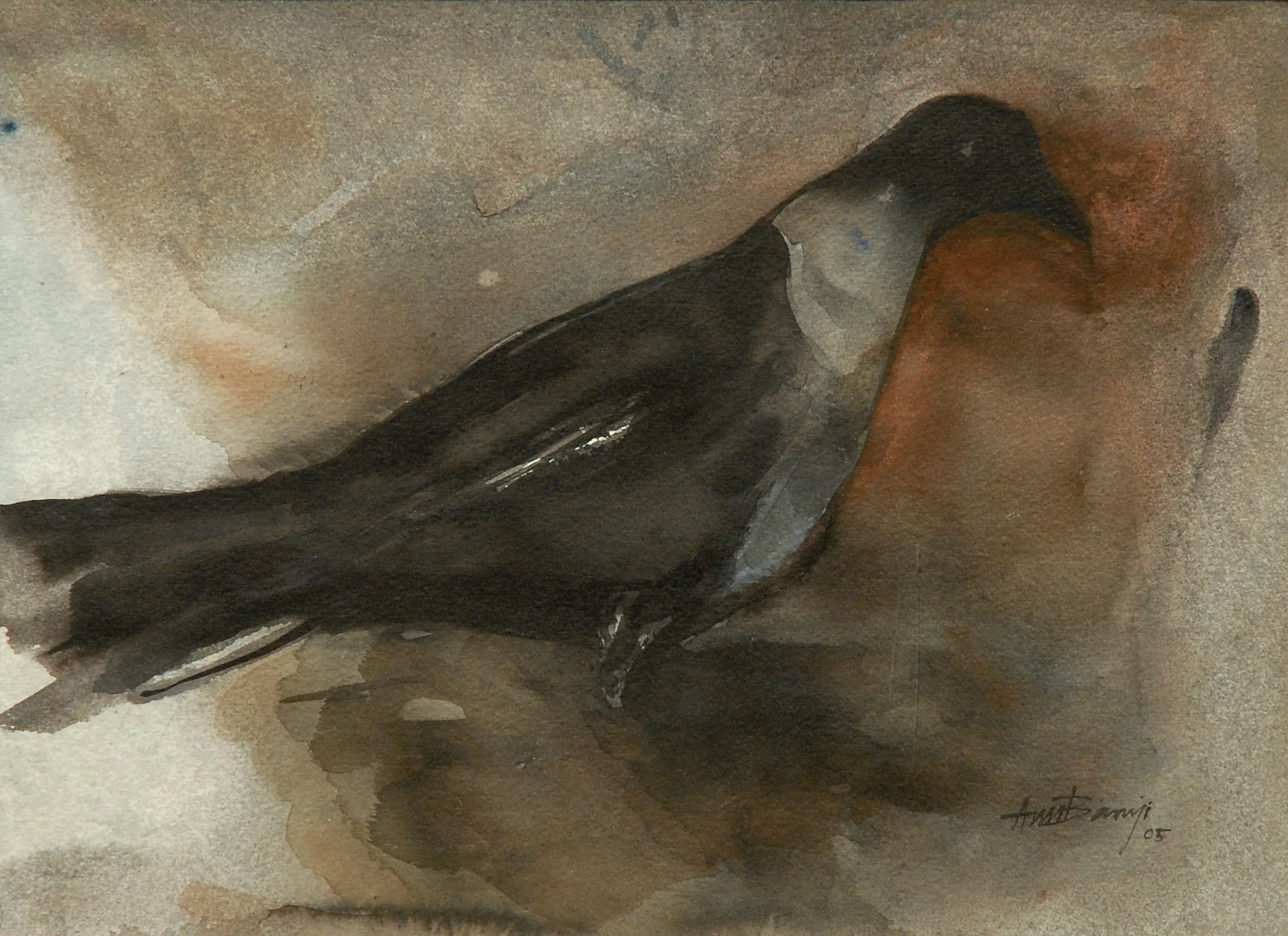
Imprints off a Sensitive Sounds - The Art of Amitabha Banerjee
March 2008
PARITOSH SEN ON AMITABHA BANERJEE
…the small print-making studio opened by the Society of Contemporary Artists, in Calcutta became a great hub of activity in the sixties, seventies and eighties. Among the serious practitioners there Amitabha Banerjee's name automatically comes to the forefront. Unlike most of other colleagues...for whom painting came first, printmaking second, Amitabha made the latter his first love. He spent most of his spare hours in comprehending the complex nature of the technique of making of prints from metal plates. He also became aware of the new technical inventions made by W. Hayter and his able disciple Krishna Reddy. Added to this were his own innovations which made his prints very rich and in subtle tones, depth, texture, light and shade, not to speak of the subtle use of colours. It is generally agreed that the art of printmaking is primarily technique-based and there is endless scope for experimentations and innovations.
... all this technical know-how, if not used sensitively and judiciously, can degenerate into a very precise and precious academism. To balance forms, calculate proportions and other surface pre-occupations can be an intellectual exercise, rather than an act of creative imagination. Mere technical jugglery, however brilliant, can never take precedence over creativity. It is here that Amitabha Banerjee's prints became aesthetically relevant and valid works of artAs I said earlier, while sharpening his tools over the years he never lost sight of this basic truth which many practitioners of printmaking are apt to do and keep their technical discoveries well-guarded secrets. From the begin- ning of his career as a printmaker, Amitabha became interested in etching, engraving and intaglio process in all their complexities. It is interesting to note here that being a practitioner of the Intaglio process he never gouges his plates, nor does he take help from electric tools which printmakers all over the world use today. The subject matters he has tackled have all along been simple-trees, plants, shrubs, brick walls, birds, butterflies and human figures, mainly portraits of women with an occasional one of a man as will be seen in the present album.
He takes great pains to prepare his plate before printing. All the prints in this collection bear ample testimony to it. The surface of the plate is a complex amalgam of different textures and tones, light and shade created after long deliberation and always bearing in mind their final appearance in print. His approach is like that of a film-maker who while taking his shots always visualises how the images are going to look like on the screen. This process of visualization is important to him because, among other things, it helps him to avoid (a) to much cluttering up of the plate and (b) errors which can become dif- ficult to eradicate. Because of the of the very nature of the process of printmaking, one cannot indulge in trials and errors as is possible in painting and modelling, sometimes even in sculpting...
The present writer had many occasions to watch Amitabha at work while preparing his plates. Pa- tience and hard thinking backed by a desire to avoid easy solutions seemed to be his motto. Lines and tones played an important part in the shapes of images on his plates. The fragile quality of lines added to the poetic quality of imageries. The dark and light areas were worked out with extreme care in which multiple tones were created; thus making the entire plate rich in visual appealIt is not that he did not take chances. Nor was it true that accidents did not take place. All truly creative artists are apt to take risksFor them creativity is comparable to an unknown journey beset with lots of surprises on the way. Looking at Amitabha's prints carefully the viewer will surely come across many traces of such sur- prises. Yet the viewer with be equally pleased to discover that the plates and the prints are the products of a mind that is sure of its working, of its intellection and the final product in the shape of colours and the high quality of neatness of printing without appearing to be hygienic or sanitised.
Amitabha has a preference for a mixed palette dominated by dark shades. He generally limits him- self to two or three colours. These shades invest his prints with a mystery that beautifully complements his imageries which inhabit a world of stillness and silence that make the hallmark of Amitabha Baner- jee's graphics. With his diligence and commitment to his art no wonder today he is regarded as one of the front rank graphic artists of the country.
Paritosh Sen
AMITABHA BANERJEE ON HIS ART
In my long career I have worked in various mediums. My efforts in graphic medium attracted greater public attention and approbation. They brought in occasional kudos. Naturally, these form the bulk of the exhibits. There are only a few items in other mediums. They indicate that I often perceive and express in other mediums too.
I would like to add a few hints to the understanding of my works as I perceived them. How far I have succeeded is a matter of judgment best left to the public.
Unfortunately, both I and the public are in the present case, limited by constraints. The constraints being the large periodical gaps which could have elucidated my brief.
Before a work of art takes its apparent final shape, it goes through a period of gestation. It is common knowledge. The process is not only internal but also external. Drawings, structural changes and adjustments, experiments with light and colour, some technical applications, all these are part of it. Before I achieve even a medium of what I want, there may be quite a few works in the process. Some of them attain a right to exist on their own. Even though quite often, they are not the thing that I wanted, in the first placeThe lessons I learn are not all lost, they are present in another work. Those which started as exercises or experiments, sometimes gain a life of their own. They stand beside may be, a much later work where the fruits of all those efforts have been realized to a certain extant. I do not hesitate to admit that sometimes I also change along with the process. What I mean to say is that the role of initial uncertainty and sudden realization - is very important. Please do not mistake it for heuristic work. Once something visually satisfactory with enough evocativeness comes out, I am obliged to leave it alone...
As I have hinted earlier, the tools of cognition of an artist are through structuresstructures con- ceived in light, colourtexture in short, a formal identityBut above all, there is a feeling, a mooda sense of involvement and compulsion, in the endlove
A structure which involves drawingby itselfhas no great significance to meBut it is a foundation on which the superstructure is builtA superstructure that can transmit or communicate a feelinga sensibilityIt is almost the same as in the case of a houseOne does not look at the foundationone looks at the homely feeling in a houseOf coursethere are houses of public utility and there are private homesThe same waythere are works of art for public occasion, public cause, and public enjoymentbut there also are works of art for private enjoymentConsciously or unconsciously, I have opted for the later.
Structures have a logic of their own. Great artists have carried out experiment in this field in rela- tion to mass, volume, light, perspective and other aspects. I believethe time has come to incorporate the end results in the works of contemporary artists. After all, it is the feeling, the moodthe love that has to be communicatedIf the logic of structure has to be sought at all, in a given work of art, it has to be sought in the extent to which it has been able to express the feeling.
As a result, if any one tries to recognize a known object, he may often be disappointedIt may be a conglomeration of more than one objectsit may be chimericalIt is so, because it has to be compulsively So.
I never treated life as a unifying aspectI use light to serve the purpose of the work. I do not want my work to be subservient to light. It is artificial and multidimensional.
The colours can never be talked about in isolation. They are integral part of the wholeLet me give you the inside information about themA printbefore it meets my critical approval, goes through a se- ries of experiments in various colour schemes. I hope, now you realize how integral it is.
Texture is simply another matter. I admit, technique has a big role to play in it. Technique is used to bring the work of art in focus; the work of art does not play the second fiddle to technique. Most often texture too is an integral part of the work. But sometimes it has a peculiar demand of its own. Call it abstract or expressionistic but that formless form embodies a great deal of feeling communicating its joy in its existence.
Now I come to the most important part of my work. What do I try to achieve? Like all artists, I try to give permanence to a feeling, a mood; I live for what I think is beautiful. These may be in combina- tion or juxtaposition of several things. Let me give a common example. The vastness of a blue sky clear and soft.
It is beautiful no doubt, but sort of uninteresting. But the same sky with clouds in various shapes and multi hued in the soft light of the setting sun, is much more interesting and evocative. I try to catch that evocativeness. The lightness, the ephemeral, sometimes chimerical who hasn't found pleasure in the imaginary forms in the shapes of cumulus or blotches on a damp wallAll these and many other things like the moment of taking to flight of a bird, fluttering of a butterfly, the delicacy of a neglected short lived flower, there are so many more which by way of association and symbolization evokes a feeling, may be nostalgic, may be wish fulfilling; I try to give form to all those. These are not allBut, I feel, I should refrain from writing a history of my emotions and my stream of consciousness here.
Amitabha Banerjee
Amitabha Banerjee | Destitutes - 82 | Oil on canvas | 36 x 40 in | 2002
Amitabha Bnaerjee | Quest - 81 | Oil on canvas | 36 x 40 in | 1999
Amitabha Banerjee | Night - 79 | Oil on canvas | 30 x 36 in | 2000
Amitabha Banerjee | Landscape - 74 | Watercolor on paper | 15 x 19 in | 1985
Amitabha Banerjee | Landscape -76 | Mixed media on canvas | 24 x 24 in | 2003
Amitabha Banerjee | Angkorvat - 75 | Acrylic on canvas | 36 x 36 in | 2004
Amitabha Banerjee | Bird IV - 73 | Watercolor on paper | 7 x 7.25 in | 2004
Amitabha Banerjee | Baul- 71 | Ink & wash on paper | 11.25 x 10 in | 2007
Amitabha Banerjee | Prayer - 70 | Mixed media on paper | 23.5 x 18 in | 2006
Amitabha Banerjee | Untitled - 68 | Oil pastel on paper | 19.5 x 16.5 in | 2001
Amitabha Banerjee | Untitled l- 64 | Mixed media on paper | 12.75 x 12 in | 1998
Amitabha Banerjee | Bird III - 63 | Mixed media on paper | 12.5 x 10.25 in | 2002
Amitabha Banerjee | Rose - 61 | Watercolor on paper | 10 x 7.75 in | 2006
Amitabha Banerjee | Girl- 60 | Mixed media on paper | 10 x 7 in | 2006
Amitabha Banerjee | Crow - 58 | Watercolor on paper | 10.5 x 14.5 in | 2005

